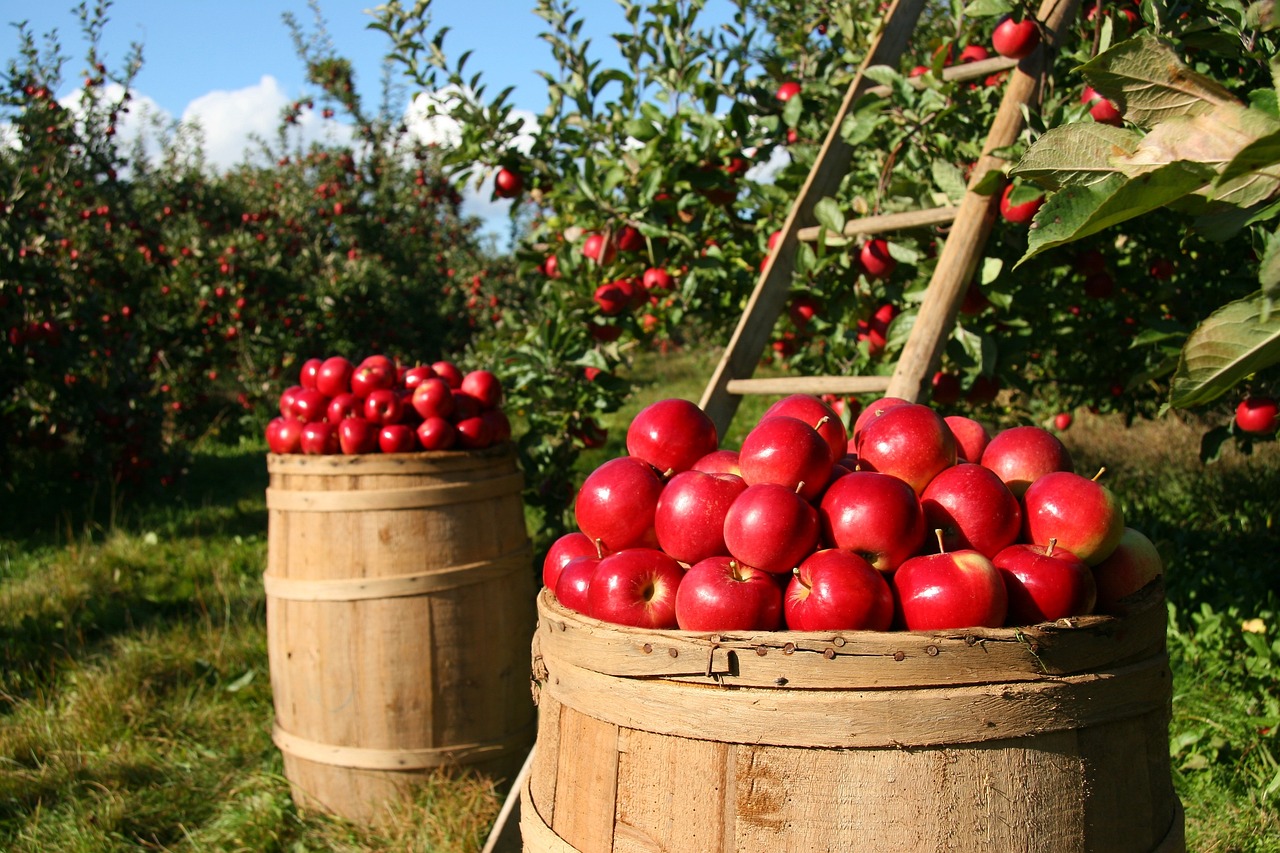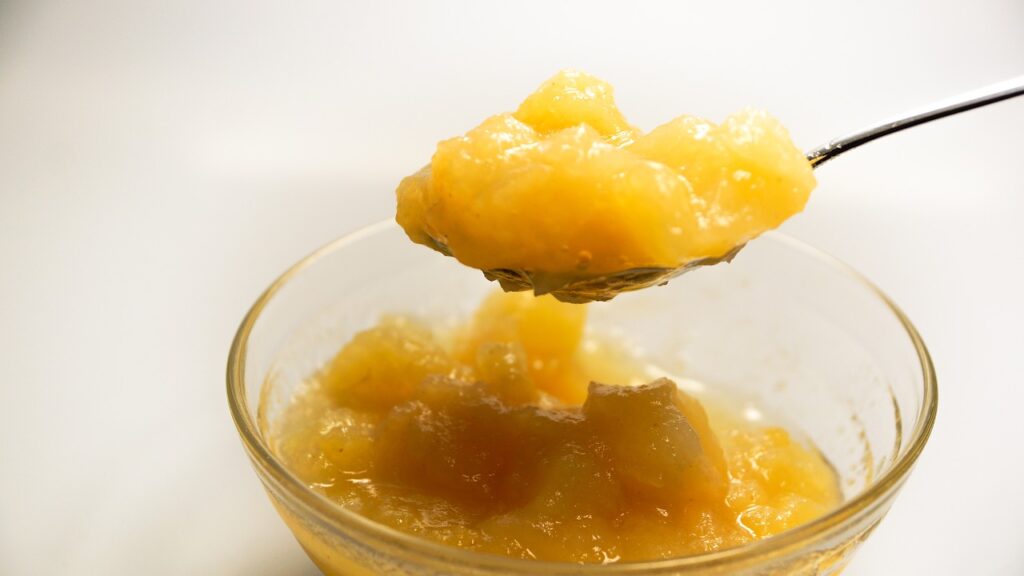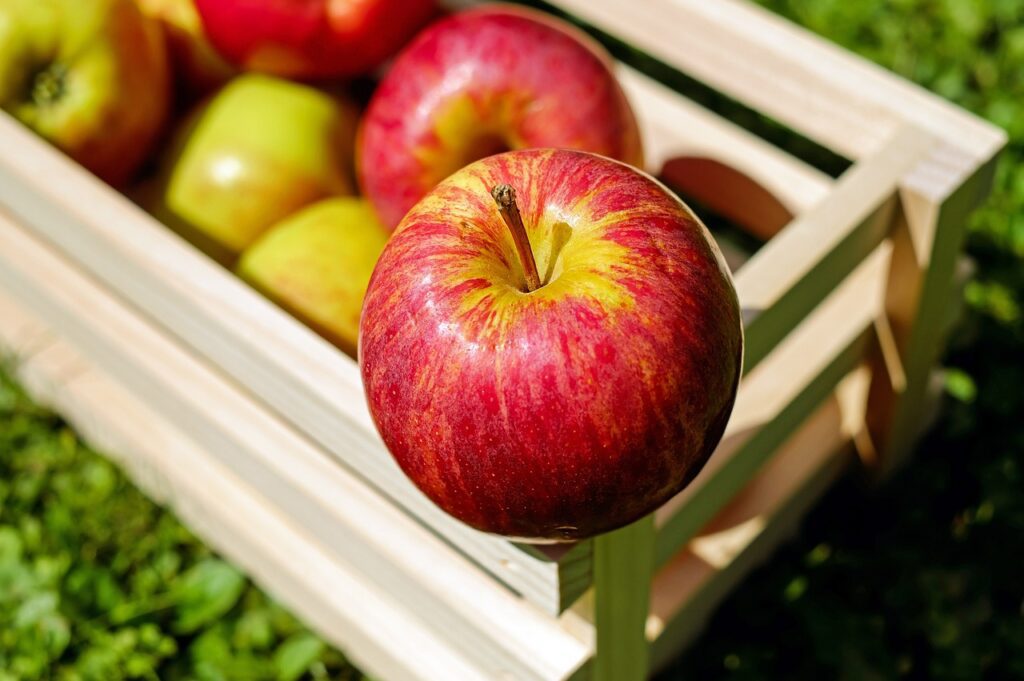
Preserving apples allows you to extend their shelf life and enjoy their delicious flavours beyond the harvest season. This is why a lot of people are searching the internet for how to preserve apples. Preserving apples also allows you to enjoy the nutritional benefits of apples alongside their delicious taste. Whether you have an abundance of apples from an orchard or store-bought ones, proper preservation is key. This guide explores different methods like canning, freezing, dehydrating, and making applesauce, offering step-by-step instructions and tips.
By following these techniques, you can savour the crispness and nutritional value of apples year-round. Let’s dive in and discover how to preserve apples effectively for your enjoyment anytime you desire.
Things You Need – How To Preserve Apples
Four key ingredients can significantly contribute to preserving your fresh apples. Here’s how To Preserve apples using these ingredients:
Hot Water: While cold water is commonly used for organic matter, it is crucial to employ boiling water when blanching and preserving apples. Exposure to hot water effectively kills enzymes that can cause the breakdown and decomposition of the fruits.
Pectin: As you cook apples, they release pectin, a naturally occurring enzyme that acts as a preservative. By heating the fruits, you can unleash this enzyme and enhance the durability of the apples.
Sugar: The naturally present sugars in apples blend well with an additional white cane or brown sugar to prolong their shelf life. Sugar plays a vital role in preventing microbes from compromising the texture and flavour of fruits.
Vitamin C: Also known as ascorbic acid, vitamin C is an excellent aid in preventing sliced apples from browning. You can either use a powdered form of the vitamin or substitute lemon juice—which is rich in vitamin C—as a DIY alternative to preserve the appealing colour of the apples.
7 Proven Methods To Preserve Apples
When faced with an abundance of apples, you might be eager to find ways to preserve them for long-term use. Luckily, there are seven effective methods for preserving apples to enjoy throughout the year. Here is how to preserve apples.
1. Canning
One of the most common ways to preserve apples is by canning. Canning involves sealing apples in jars with sugar syrup or apple juice. To can apples, pack peeled and sliced apples into pint canning jars, leaving headspace. Add syrup or apple juice. Remove air bubbles, wipe jar rims, and secure lids. Process in a hot water bath canner for about 20 minutes. Allow jars to cool and check for proper seals before storing. This process helps retain their flavour and texture. It’s ideal for making pie fillings, applesauce, or preserving sliced apples.
2. Dehydrating
Dehydrating apples removes their moisture, resulting in concentrated, chewy fruit. thus leaving you with a delightful and durable snack. To dehydrate apples, you have three options: Utilize a dehydrator or oven. You can also air-dry thin apple slices in a warm environment until they achieve a dry consistency. The best way to preserve dried apples is to store them in a sealable plastic bag, ensuring they are well-sealed for long-lasting freshness.
Dehydrated apples can be enjoyed as a healthy snack or used in granola, trail mixes, or baked goods.
Additionally, you can blend apples with other fruits to create a puree, then spread it thinly on a baking sheet or dehydrator tray. After drying, the result is a tasty and portable snack that can be stored for an extended period.
3. Apple Sauce
Applesauce is a popular and versatile method for preserving apples. Making homemade applesauce is a simple and rewarding process. Besides, You can either enjoy it fresh or can it for about 12-18 months
To make applesauce, peel, core, and slice apples. Place them in a pot with a little water and cook until soft. Mash the cooked apples with a fork or blend them for a smoother texture. Add sugar or spices according to taste. Enjoy making homemade applesauce with this amazing recipe.

4. How To Preserve Apples By Juicing
Preserving apples through juicing is a straightforward process. Start by washing and cutting the apples into smaller pieces, removing the core and seeds. Afterwards, use a juicer or blender to extract the juice. To extend its shelf life, you can freeze the apple juice in airtight containers so it can last for a much longer period—between 12-16 months.
Alternatively, you can make apple cider by fermenting the juice. To make apple cider, let the juice ferment by adding yeast. Allow it to sit at room temperature for about a week. Lastly, strain the mixture, refrigerate it, and enjoy your homemade apple cider. The rate of fermentation may vary based on factors such as temperature and desired taste. Always check the progress until you achieve your preferred flavour.
5. How To Keep Apples From Ripening Too Fast

One of the best ways to store apples to maintain their crispness for a long time is by storing them in a cool dark place. Avoid tightly covering or wrapping them. Instead, consider using a perforated plastic or open paper bag, a basket, or a wooden crate. These options allow for proper air circulation, helping to preserve the apples’ freshness.
6. Refrigeration
There are two methods you can use to preserve your apples here. If you opt to store apples in the refrigerator, you can place them in the humidifier compartment or in a plastic bag that has several holes punched in it. Alternatively, you can use a zipper-type vegetable bag. This precaution prevents the loss of moisture and helps retain the desired crispness of the apples.
Remember to keep apples away from foods with strong odours. Proximity to such items may result in the apples absorbing unwanted odours, affecting their flavour and quality. So, ensure that apples are not placed near strongly aromatic foods.
Freezing is another common way to preserve apples. It is a simple and convenient method for preserving apples as they can be kept in the freezer for up to six months. To prevent browning, coat the cut apples in lemon juice before drying them. Once dried, you have the choice to either flash freeze the cut apples or freeze whole apples overnight.
After the flash-freezing process, transfer them to a freezer bag for extended storage. It is important to note that freezing apples may result in a loss of crispness and some texture. However, frozen apples work well in recipes that involve cooking. You can use frozen apples for apple pie, apple butter, or apple sauce. Using them in cooking recipes is ideal because texture changes are less noticeable.
7. Storing at Room Temperature
This is one of the best ways to store apples when the intention is to consume them within a short period. This common approach ensures the apples remain fresh for about a week. It is important to avoid exposing them to direct sunlight or heat sources to prevent spoilage.
Optimal air circulation is vital, so consider displaying the apples in a fruit bowl or basket. You should also keep them separate from other fruits to prevent accelerated spoilage. In Addition, check the apples for any indications of spoilage and remove any damaged or overripe ones. This helps to maintain the quality of the remaining fruit.
Conclusion – How To Preserve Apples
Preserving apples is a great way to enjoy their delicious taste and nutritional benefits throughout the year. Preserving apples also helps retain their nutritional value. This makes them a healthier option compared to processed or packaged foods. As the popular saying goes, “An apple a day keeps the doctor away.”
To get the best deal for your delicious apples, check out Fruit Garden or send us a direct message on Instagram. Also, explore this list of the best juicers under N40,000 for a convenient way to extract your fresh apple juice at home.















 Home
Home  Whishlist
Whishlist  Compare
Compare  Checkout
Checkout